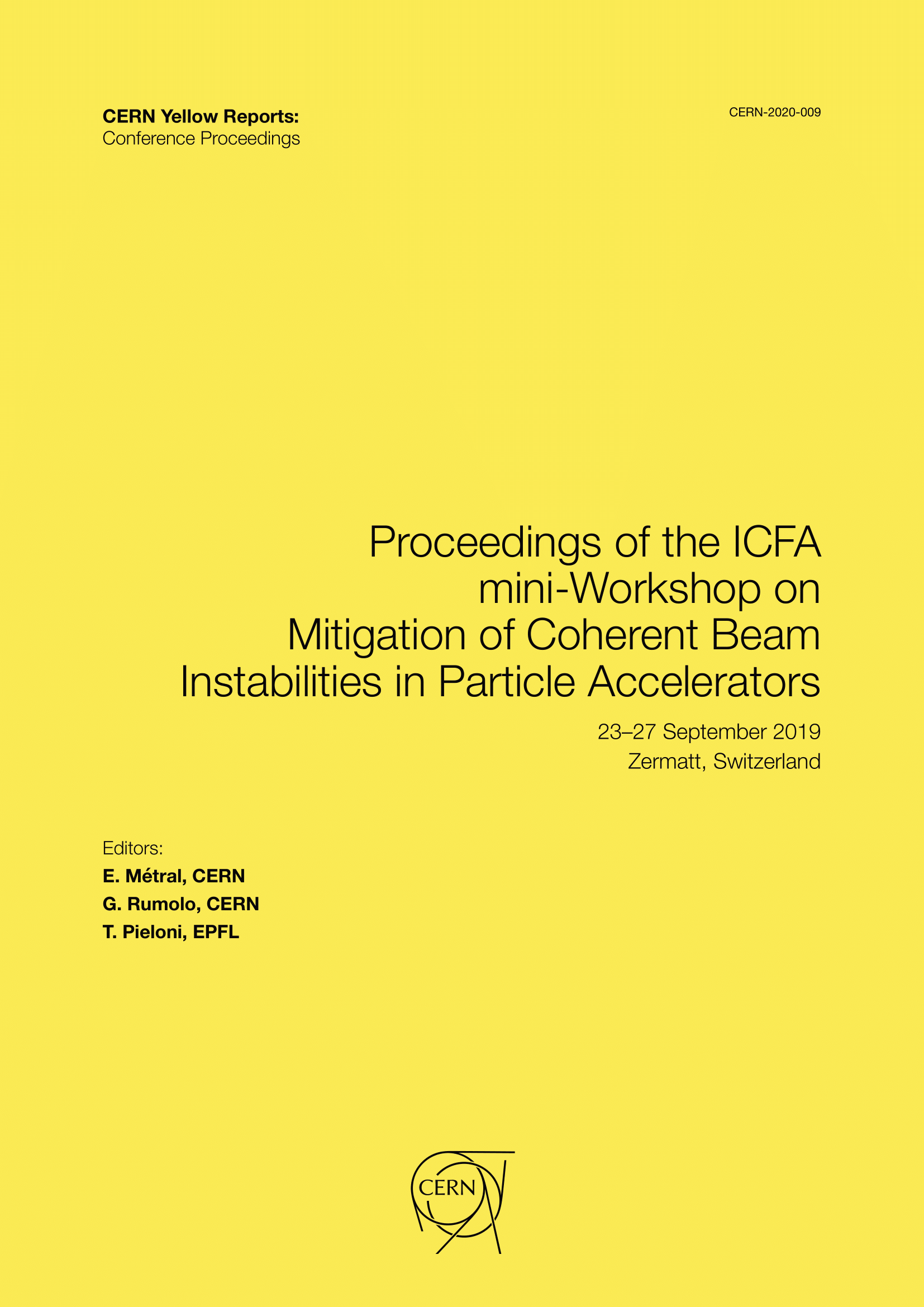Space charge effects on Landau damping from octupoles
DOI:
https://doi.org/10.23732/CYRCP-2020-009.237Abstract
Octupole magnets are the cornerstone of the collective instability mitigation in many hadron synchrotrons, including the future SIS100 synchrotron of the FAIR project. The betatron tune shifts, and the tune spread, linearly increase with the octupole magnet current, and enhance Landau damping. On the other hand, a strong octupole field, as a nonlinearity, can reduce the dynamic aperture. This can put a restriction for the allowable octupole magnet power. Thus, a good understanding of the octupole magnet usage for Landau damping of the collective instabilities is important.
The direct space-charge can produce comparable or stronger tune shifts than the octupoles. Thus the effects of space-charge should be taken into account in a study for Landau damping due to octupoles. Space-charge can have manifold effects on Landau damping. Space-charge can cause loss of Landau damping, it can provide Landau damping, it changes the incoherent tune distribution and thus changes Landau damping in the beam.
The bunched beams are considered in this work, with the focus on the head-tail instability. Head-tail modes are eigenmodes of the transverse collective bunch oscillations. Unstable head-tail modes are a major concern for high-intensity operation in ring accelerators. We consider unstable head-tail modes with different mode indices k, with the non-rigid bunch oscillations due to a finite chromaticity, even the lowest-order mode k = 0.
In the next section we review some properties of Landau damping in coasting beams and in bunches, the effects of octupoles and space-charge. For this discussion we consider two dispersion relations. The particle tracking simulations and the stability study method are described, followed by the results for the beam stability due to octupoles with space-charge of different strength. The results and the conclusions are discussed with the consideration of the incoherent tune distributions.
Downloads
Published
Issue
Section
License
Copyright (c) 2021 CERN

This work is licensed under a Creative Commons Attribution 4.0 International License.
Authors who publish with this publication agree to the following terms:
- CERN retains copyright and publishes the work licensed under the Creative Commons Attribution License 4.0 that allows others to share the work with an acknowledgement of the work's authorship and initial publication in this series.
- Authors are able to enter into separate, additional contractual arrangements for distribution of the published version of the work (e.g., post it to an institutional repository or publish it in a book), with an acknowledgement of its initial publication in this series.
- Authors are permitted and encouraged to post their work online (e.g., in institutional repositories or on their website) prior to and during the submission process, as it can lead to productive exchanges, as well as earlier and greater citation of published work (See The Effect of Open Access).

